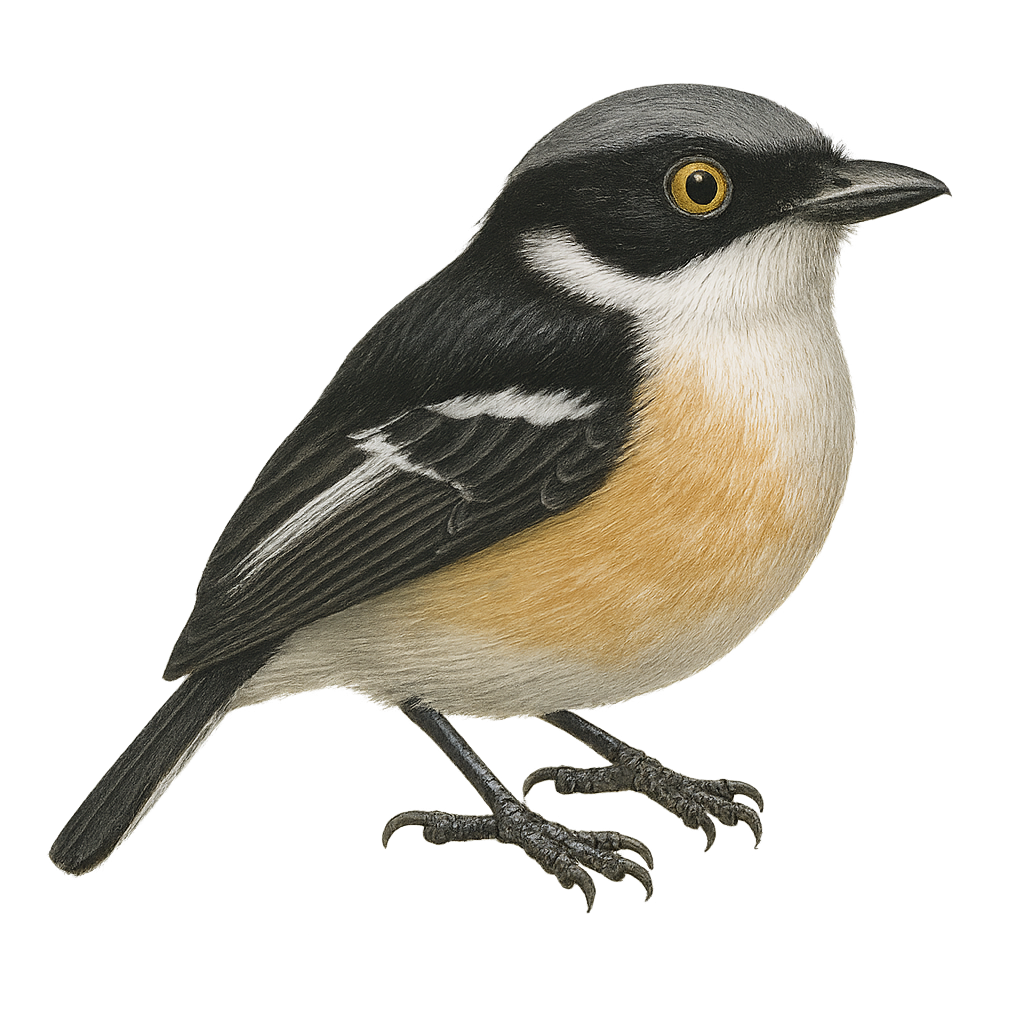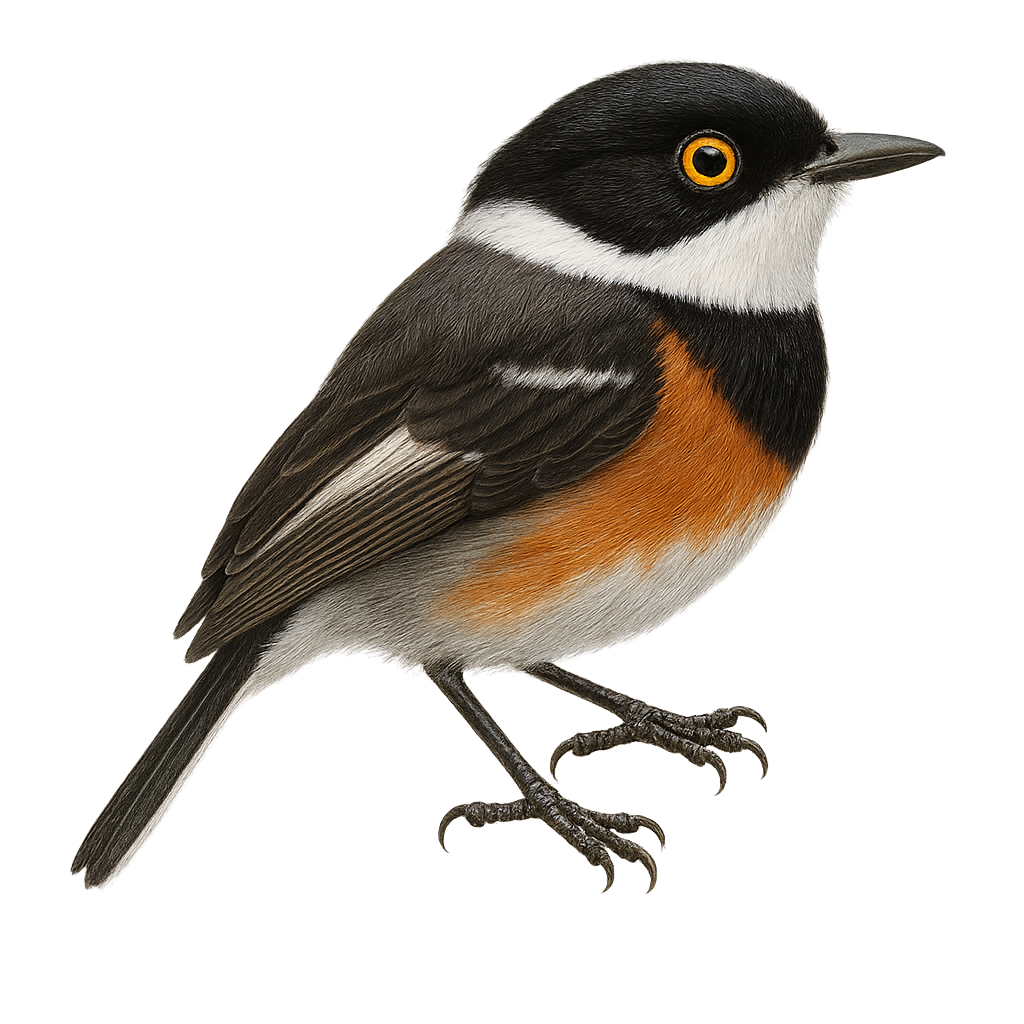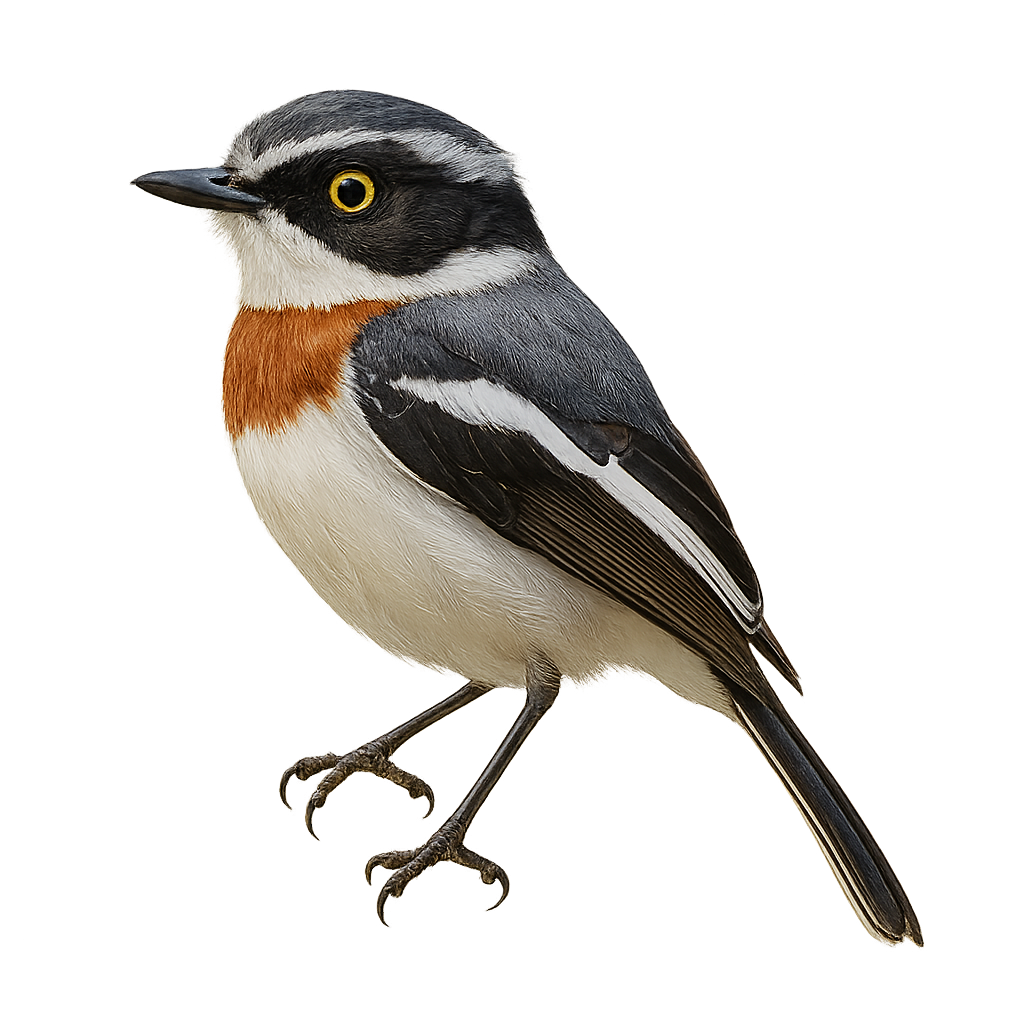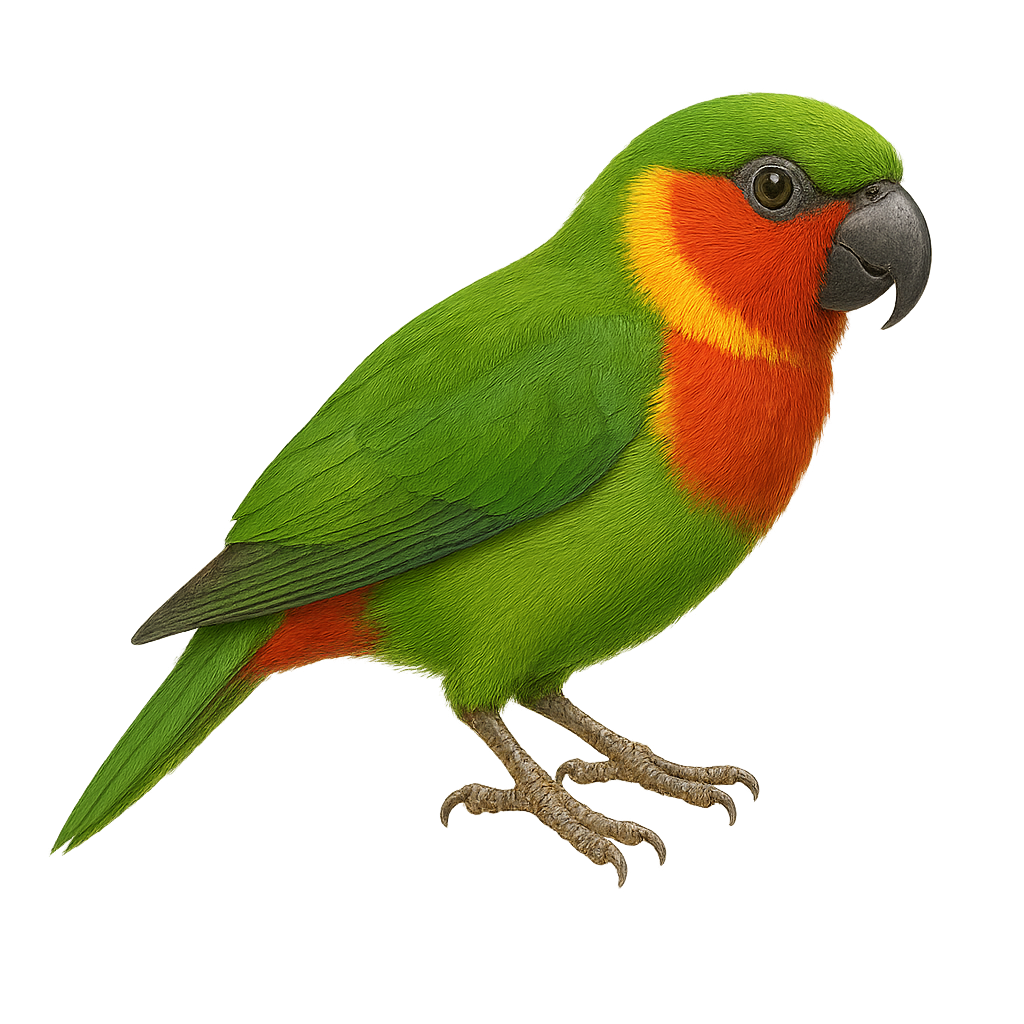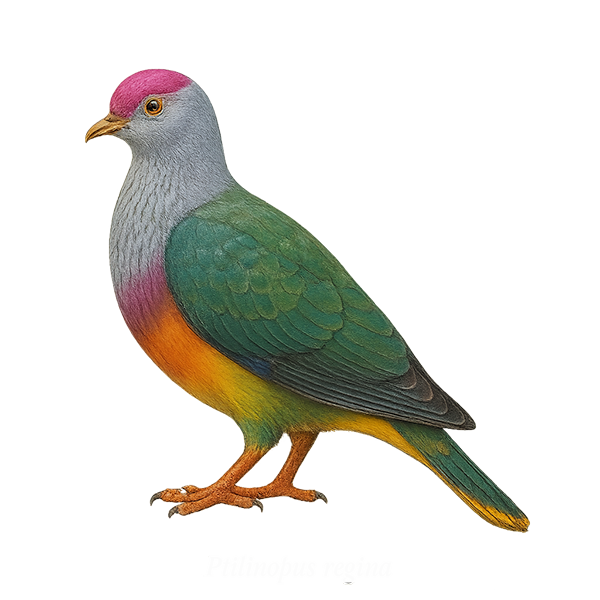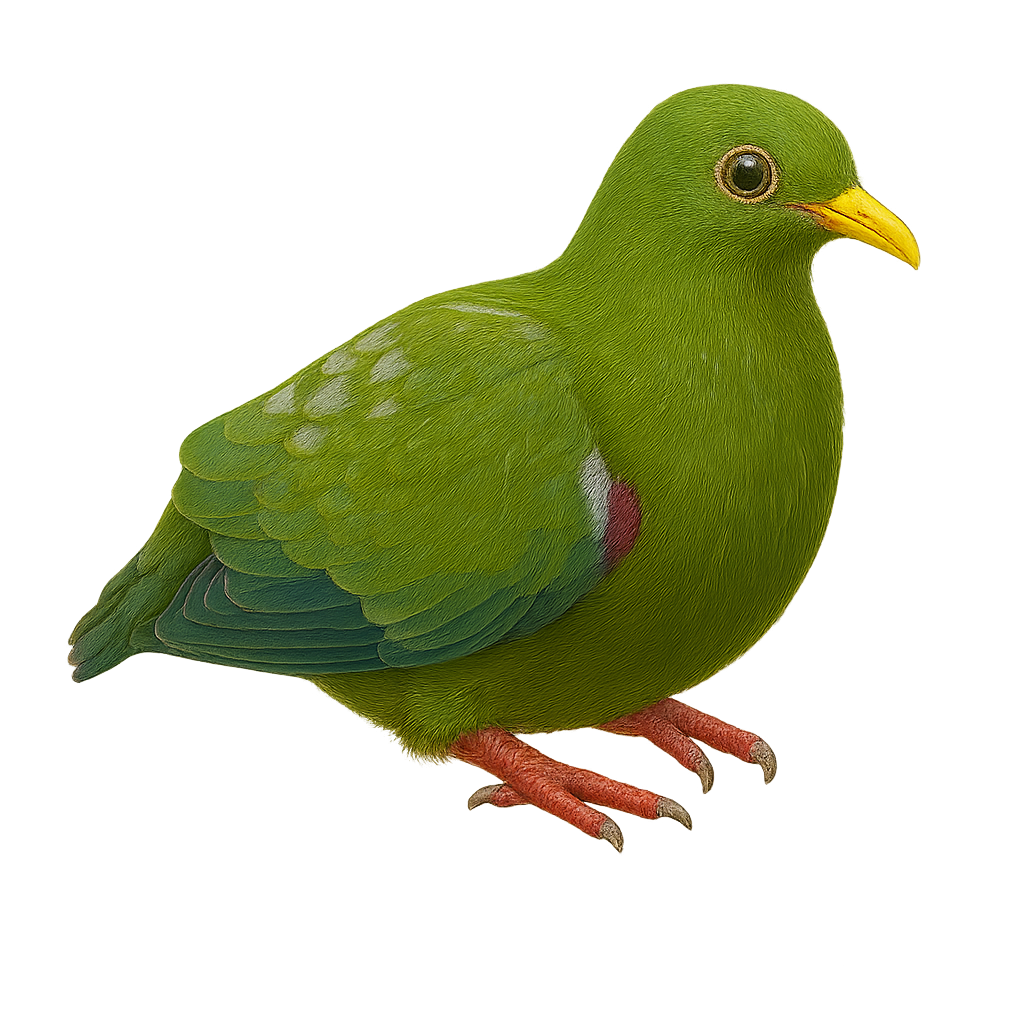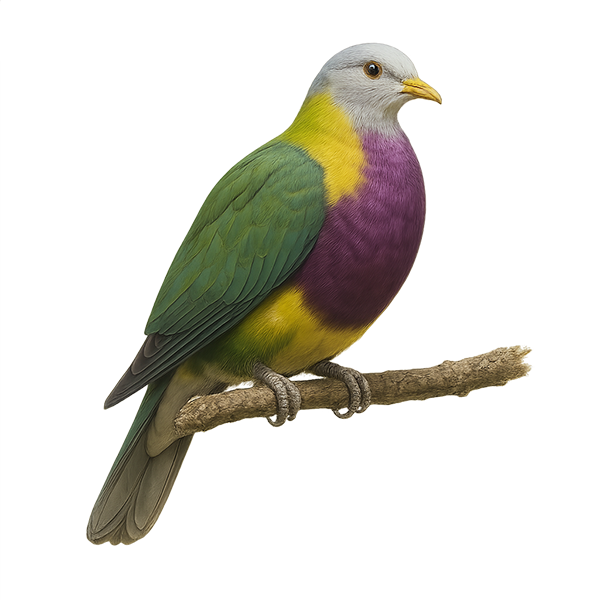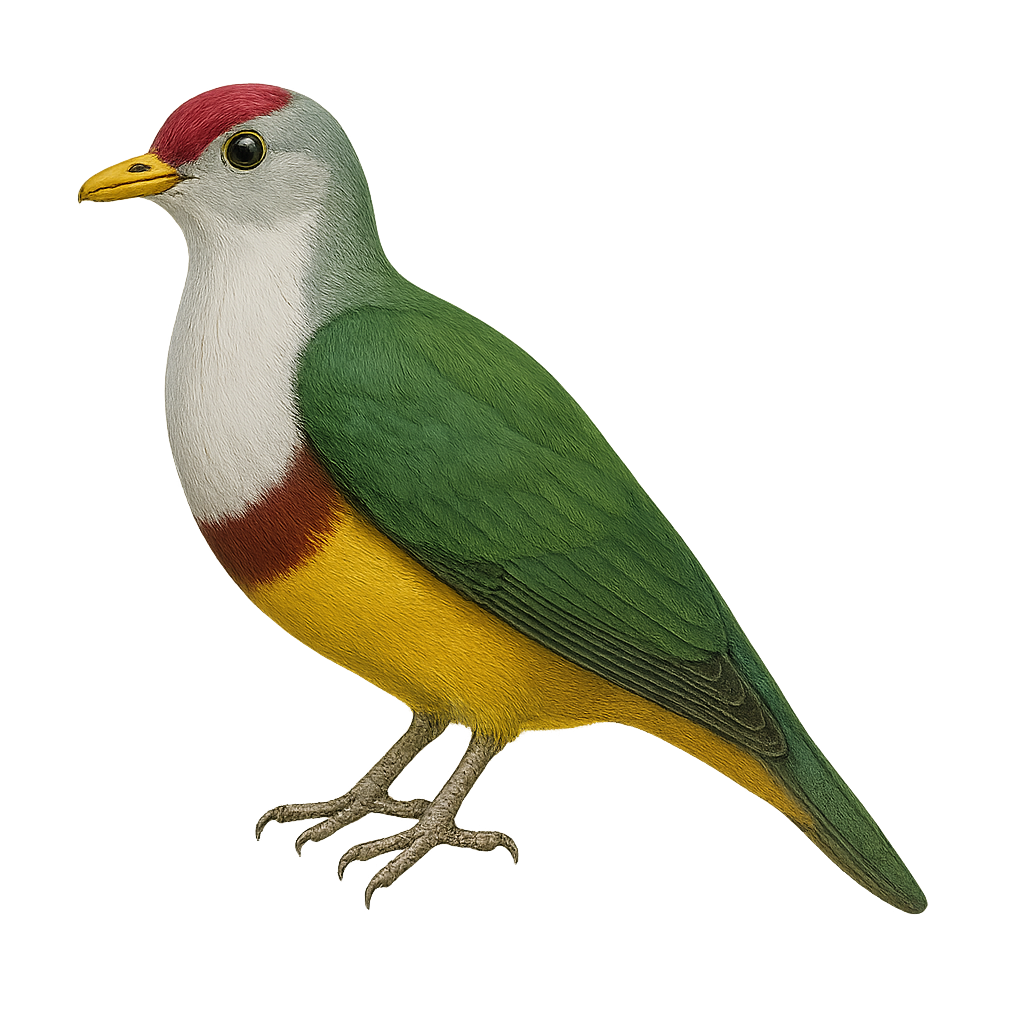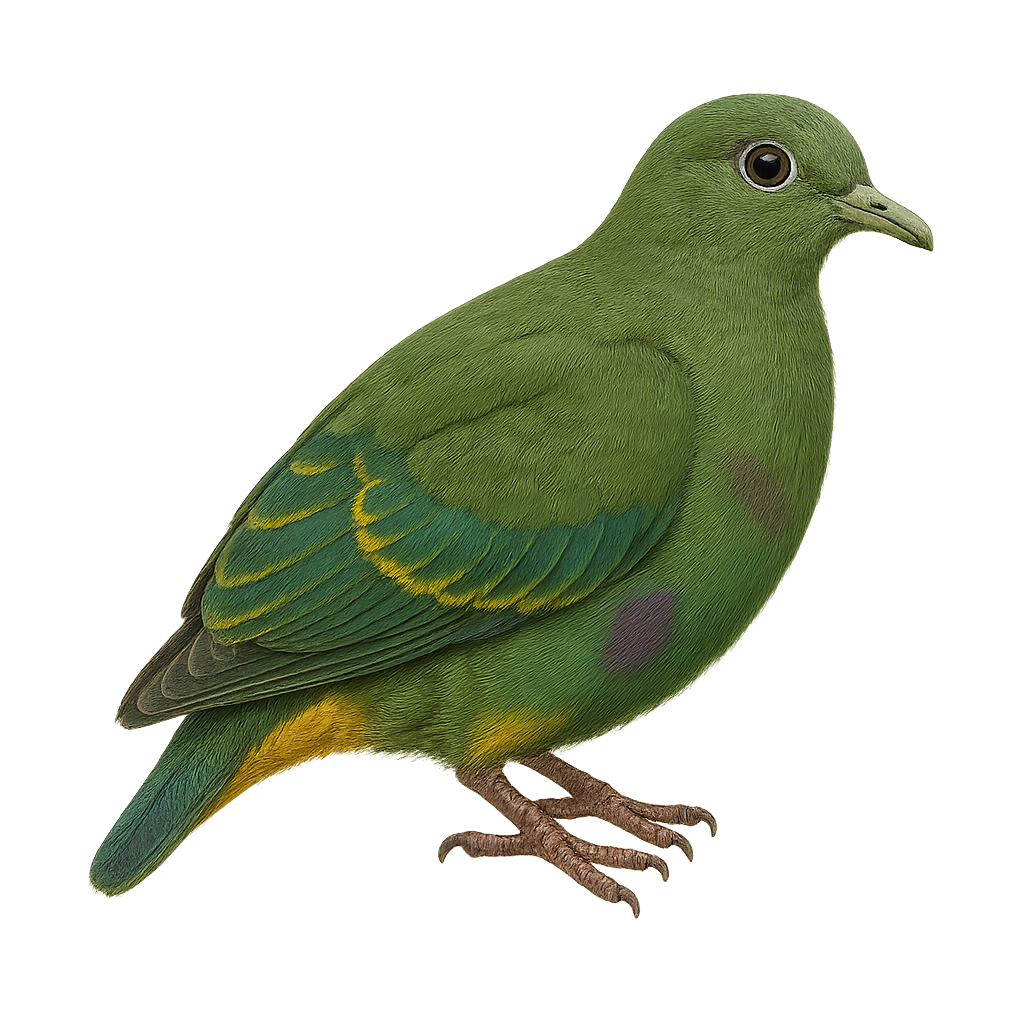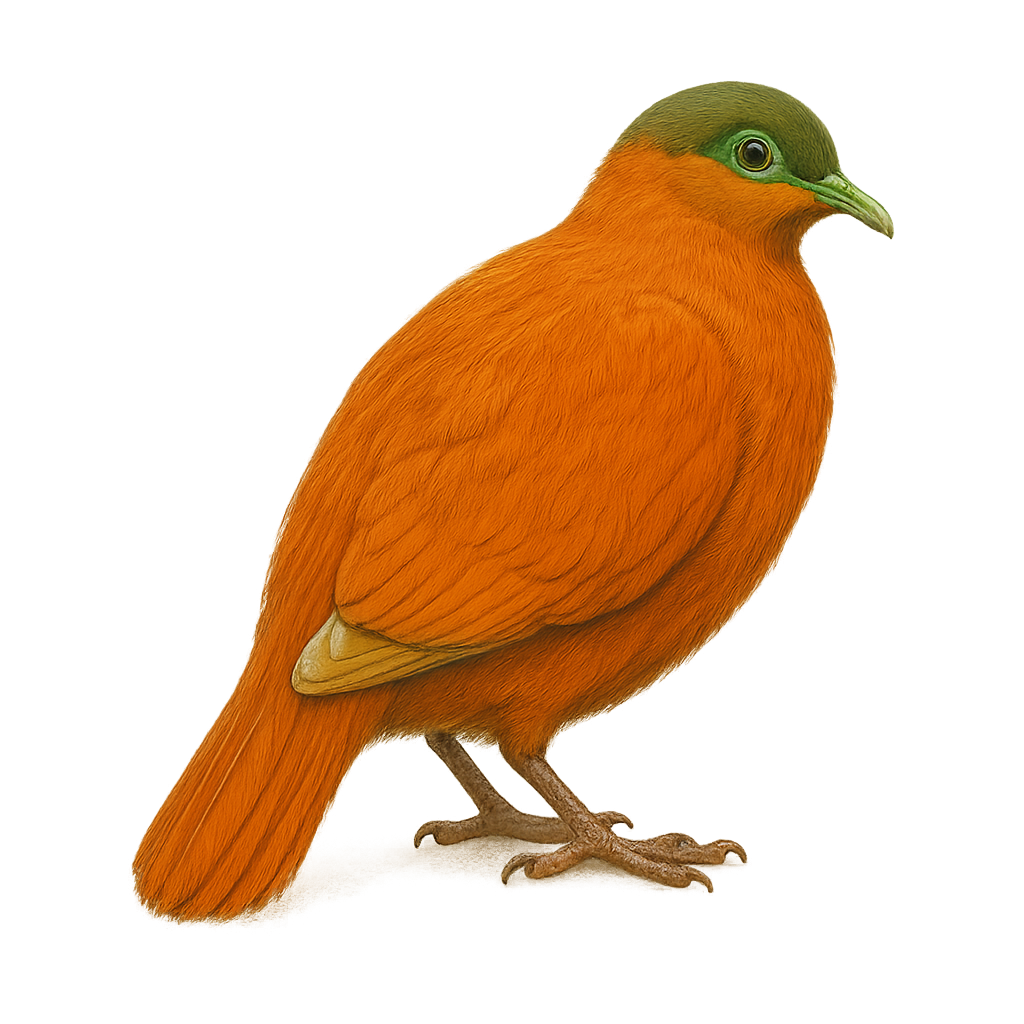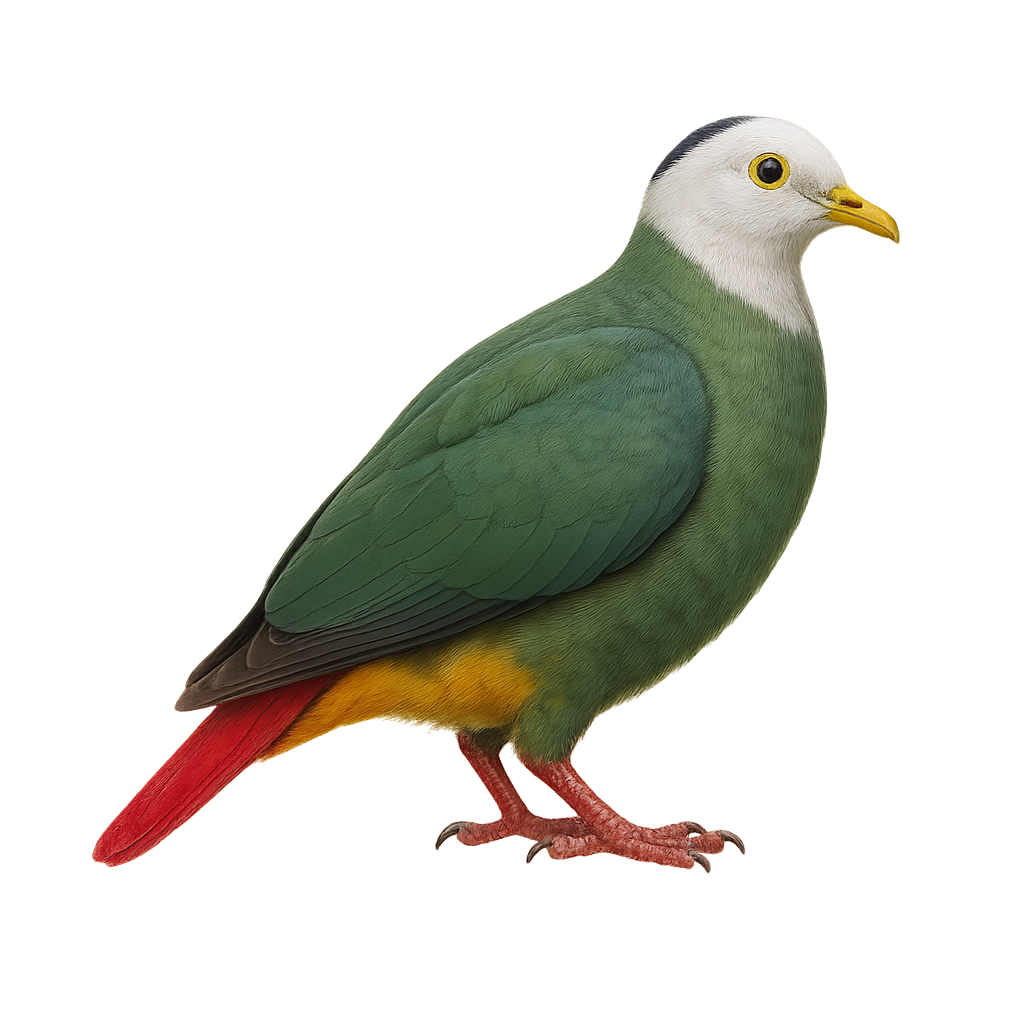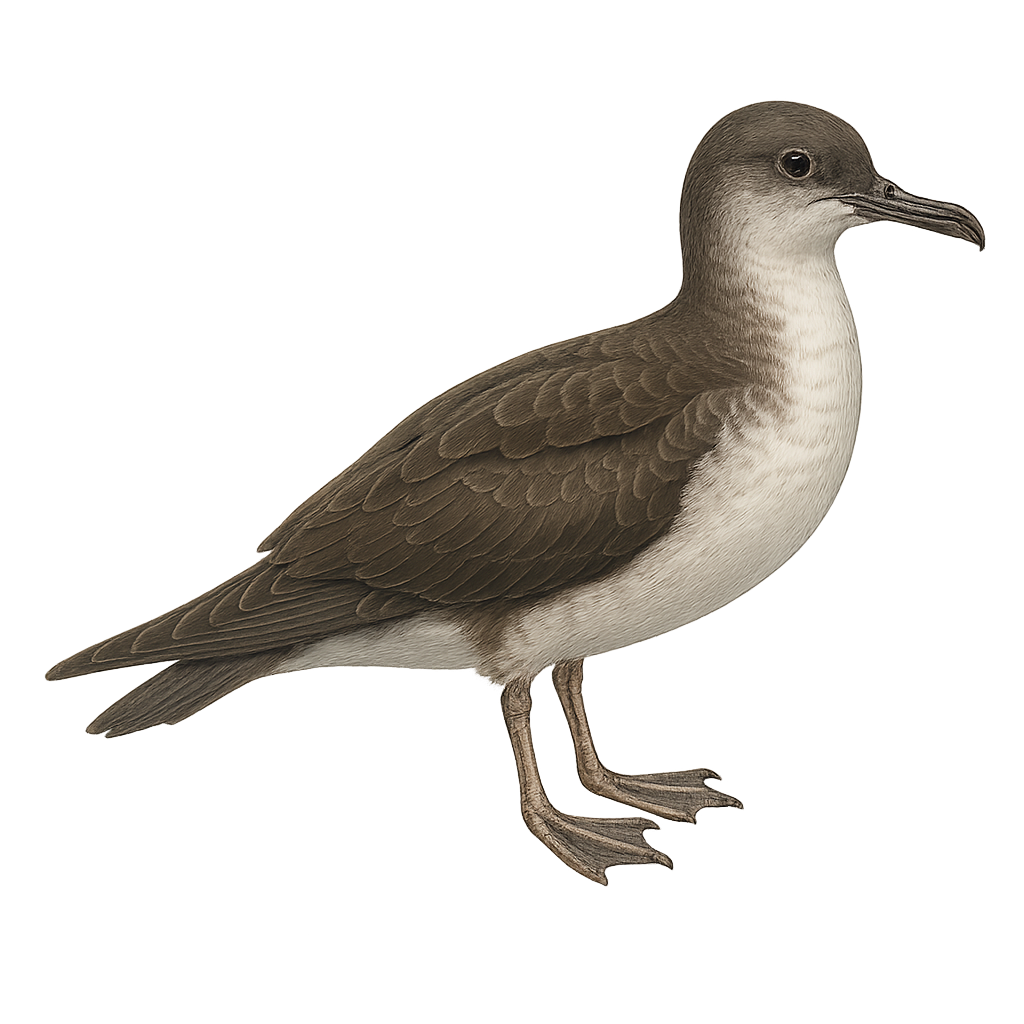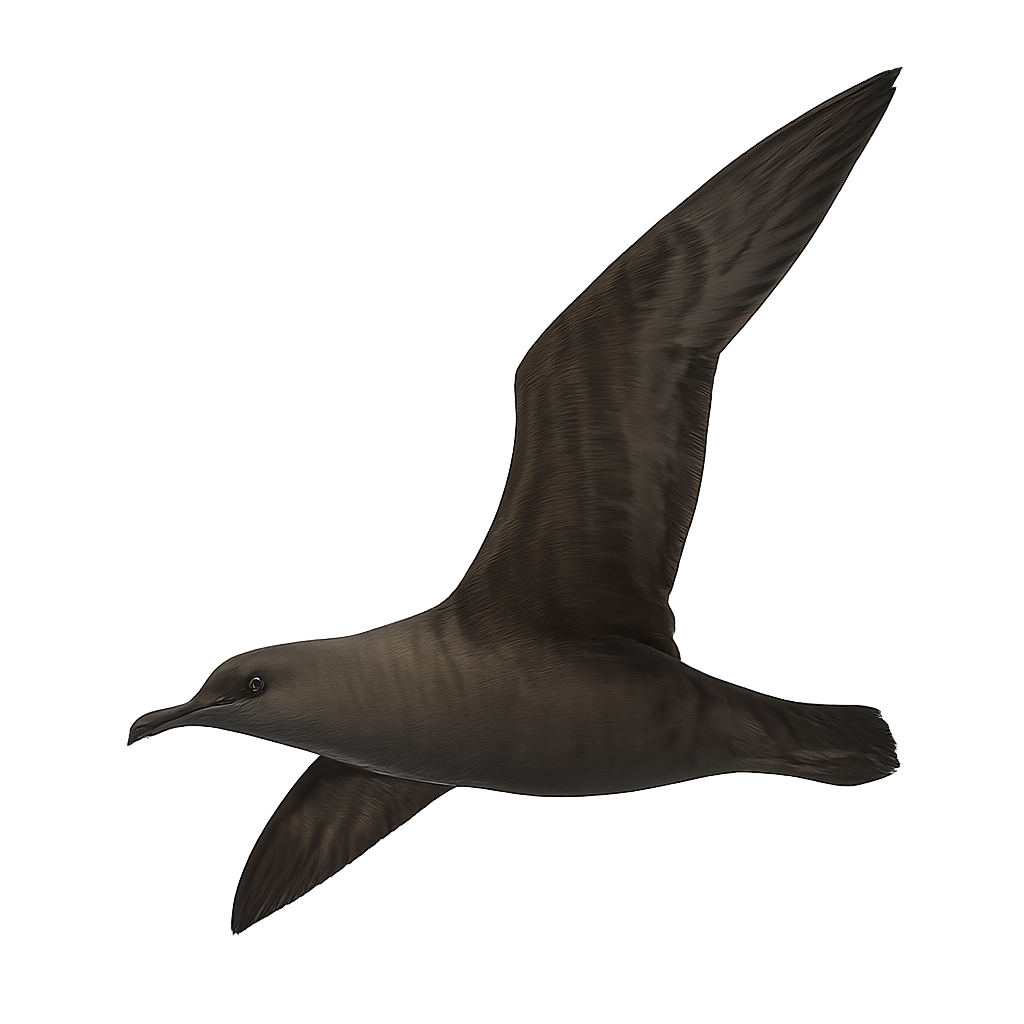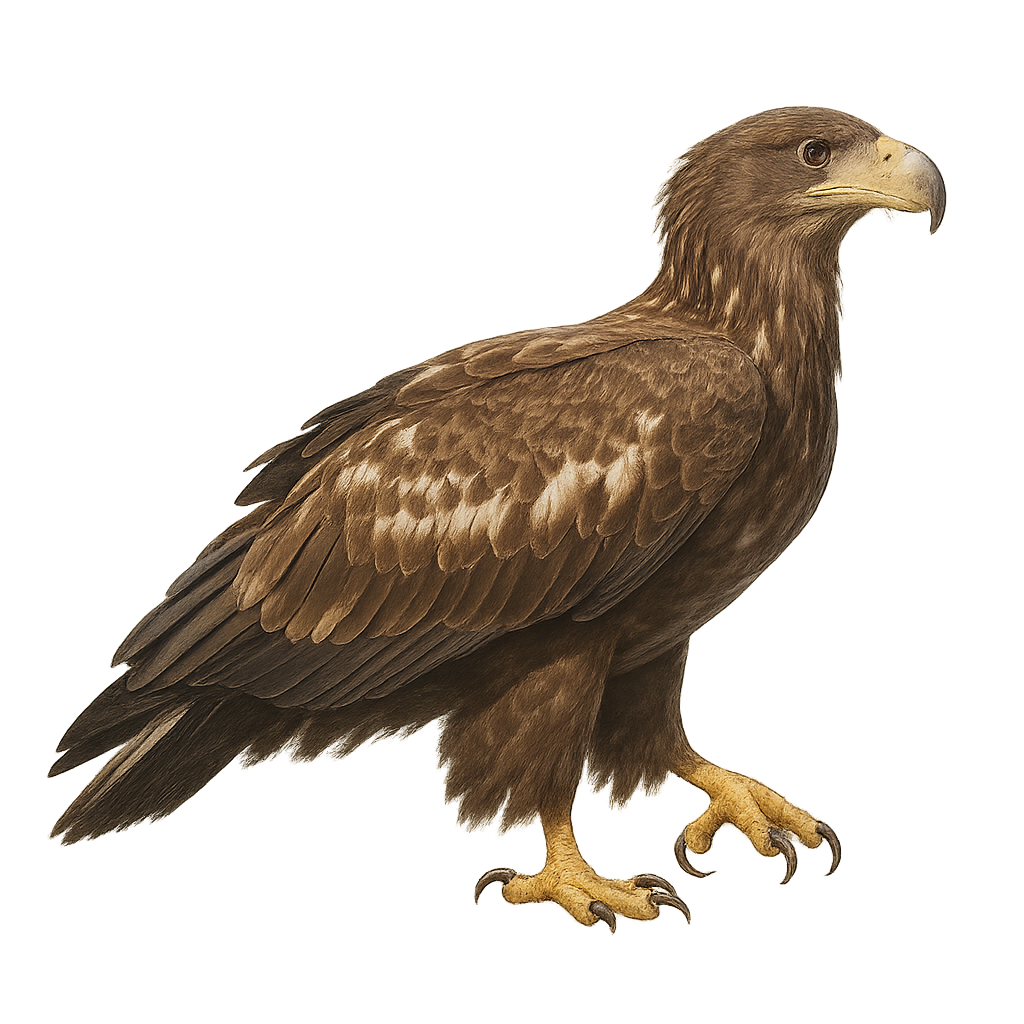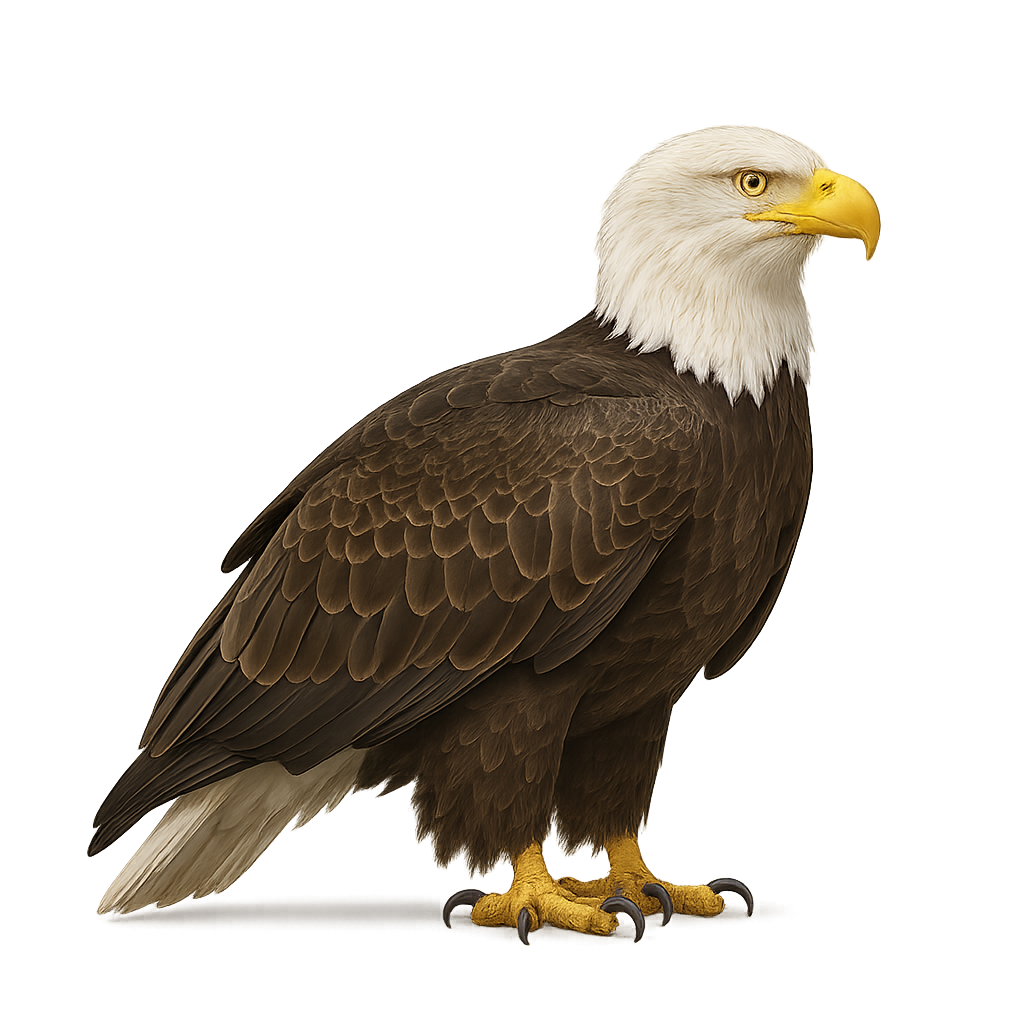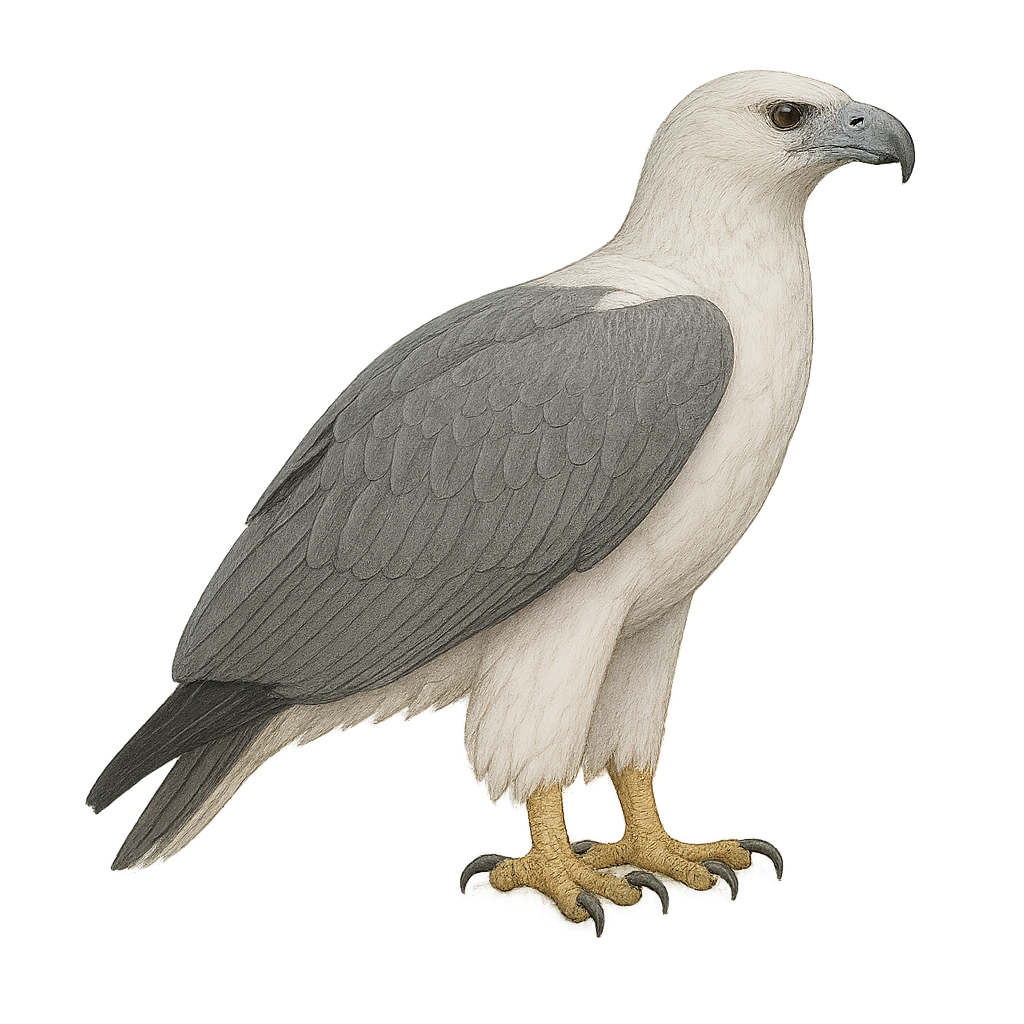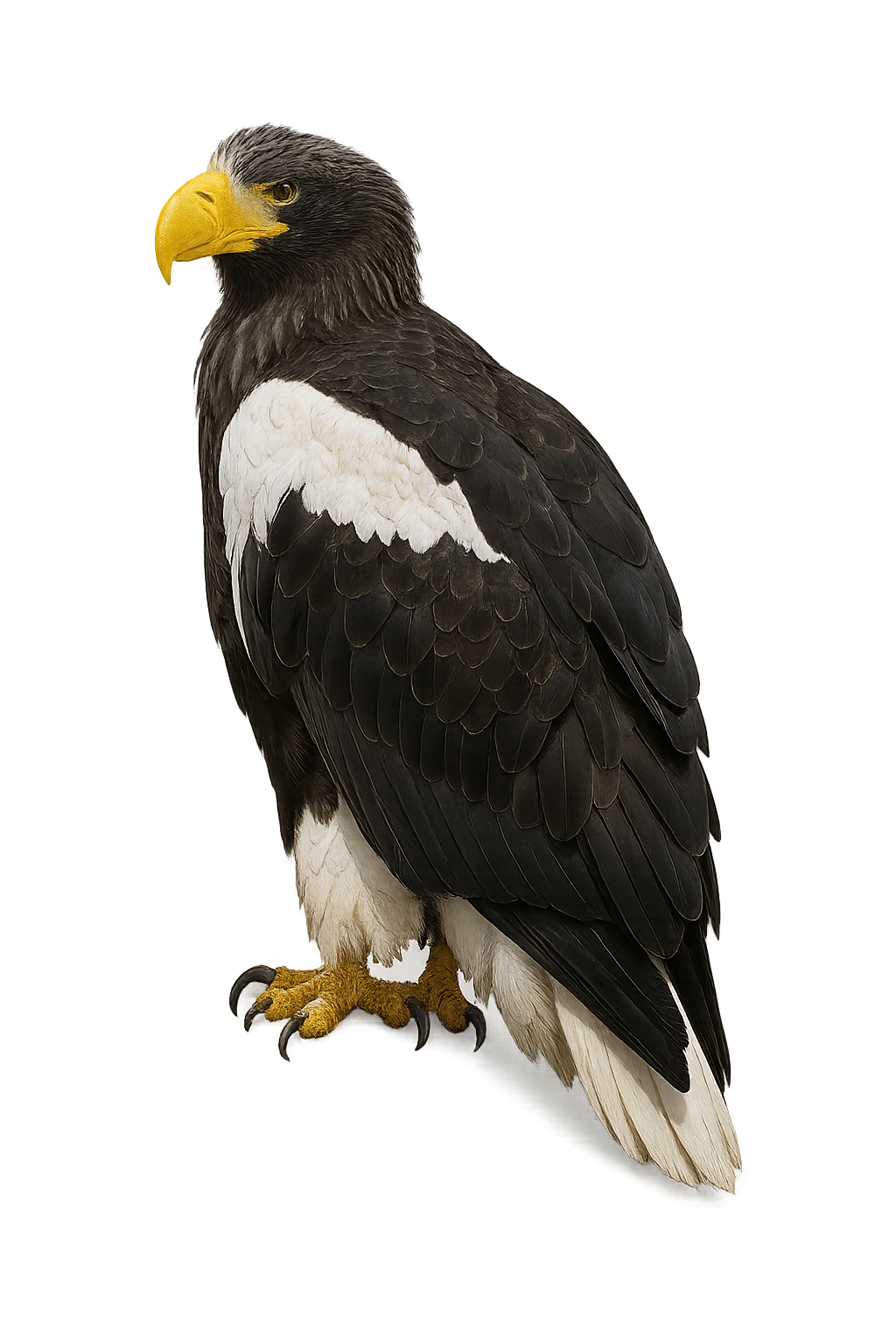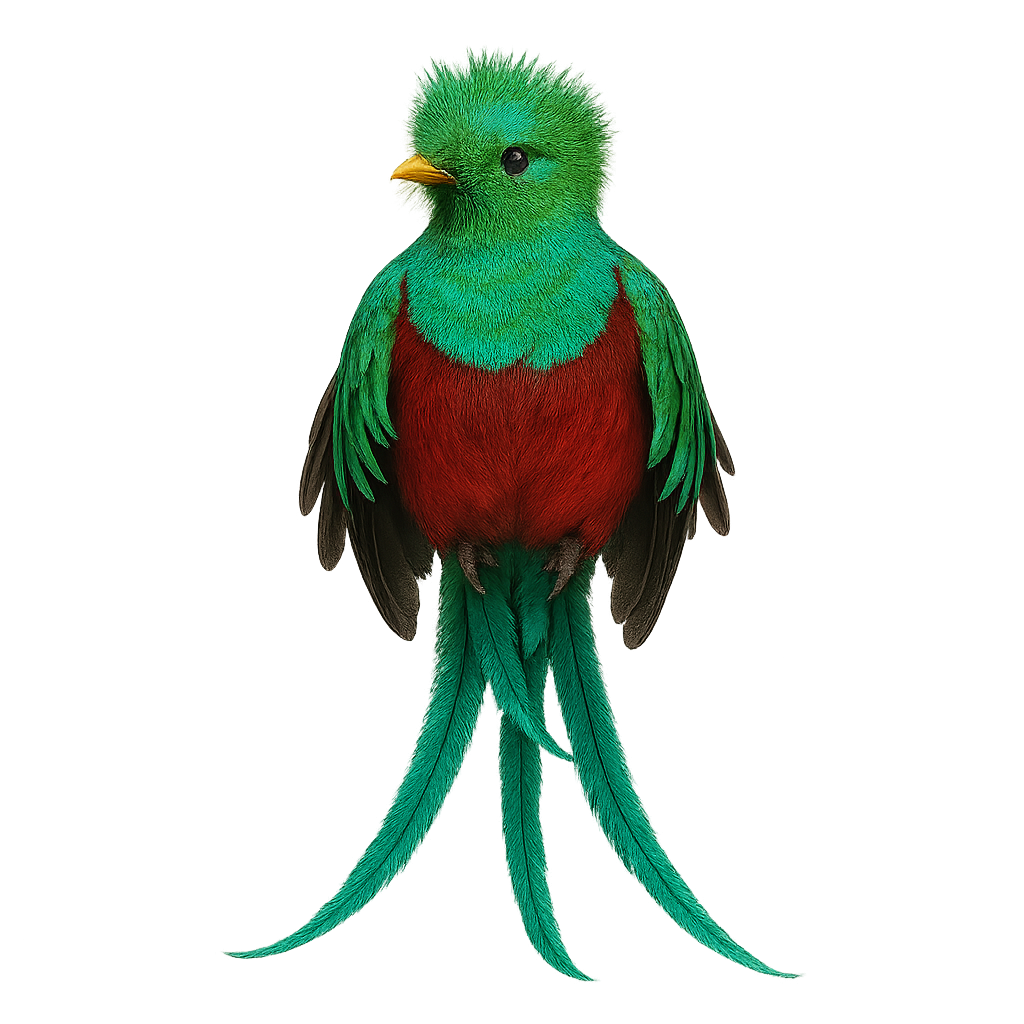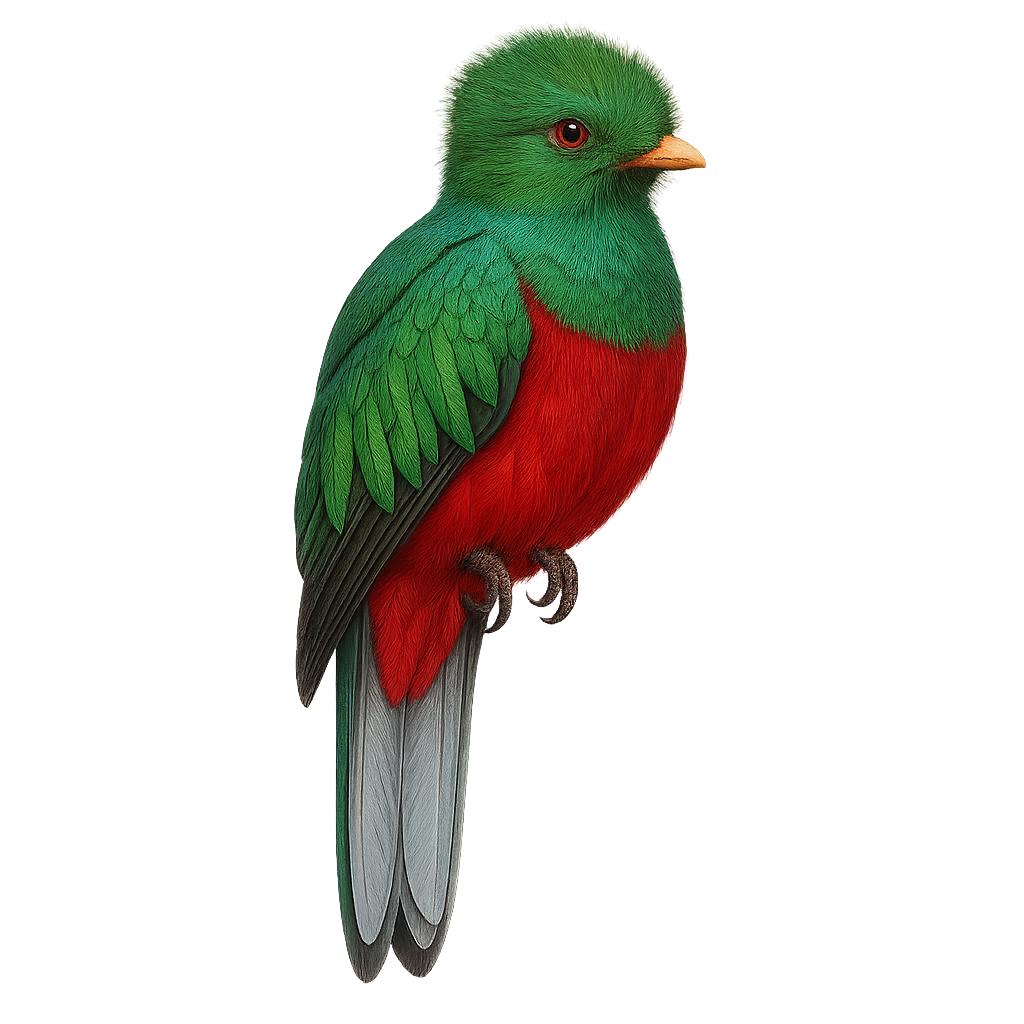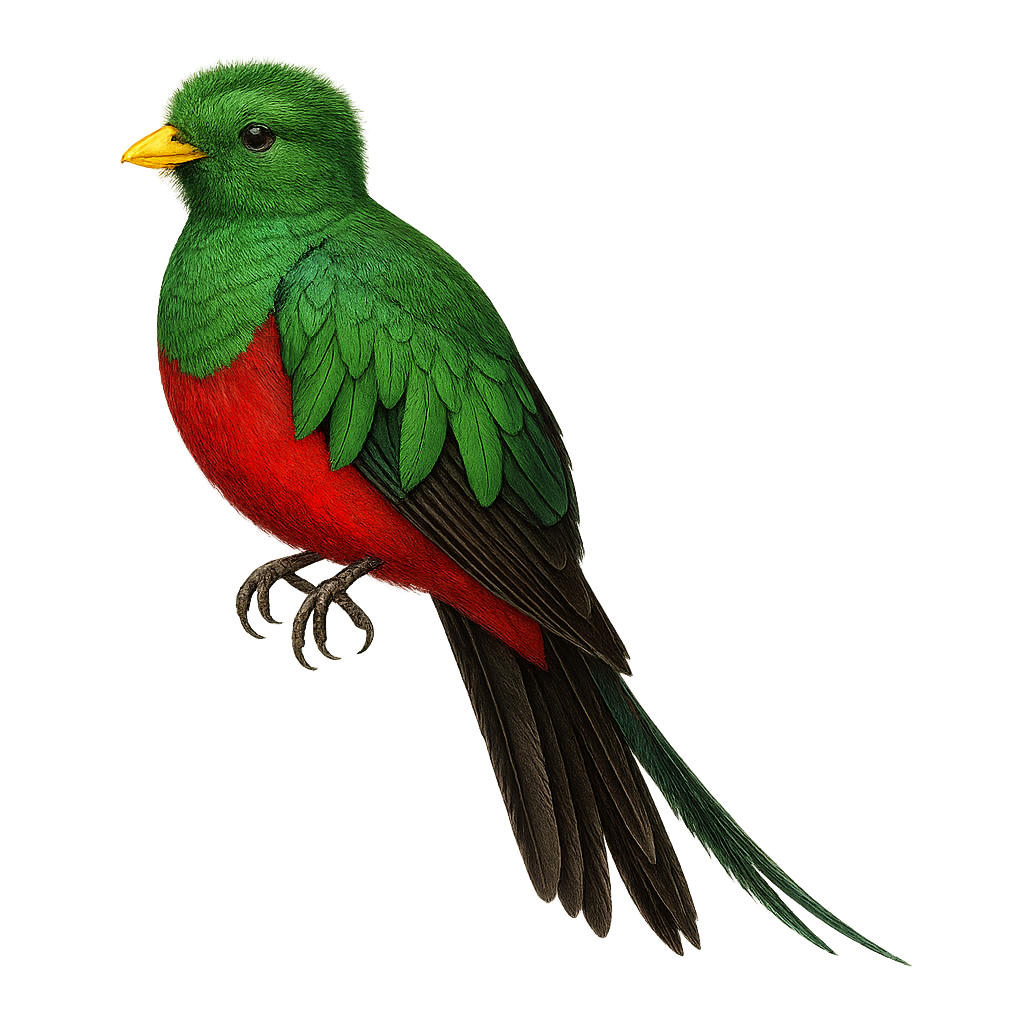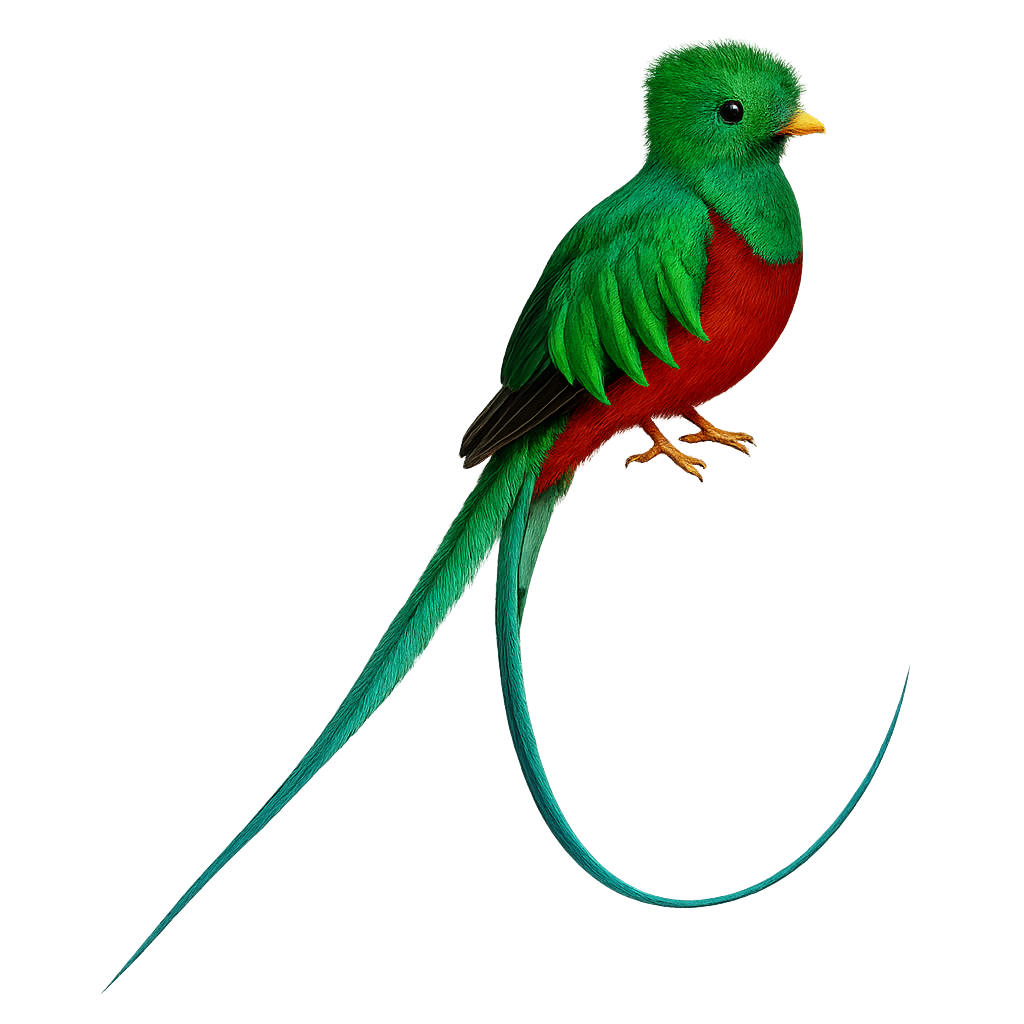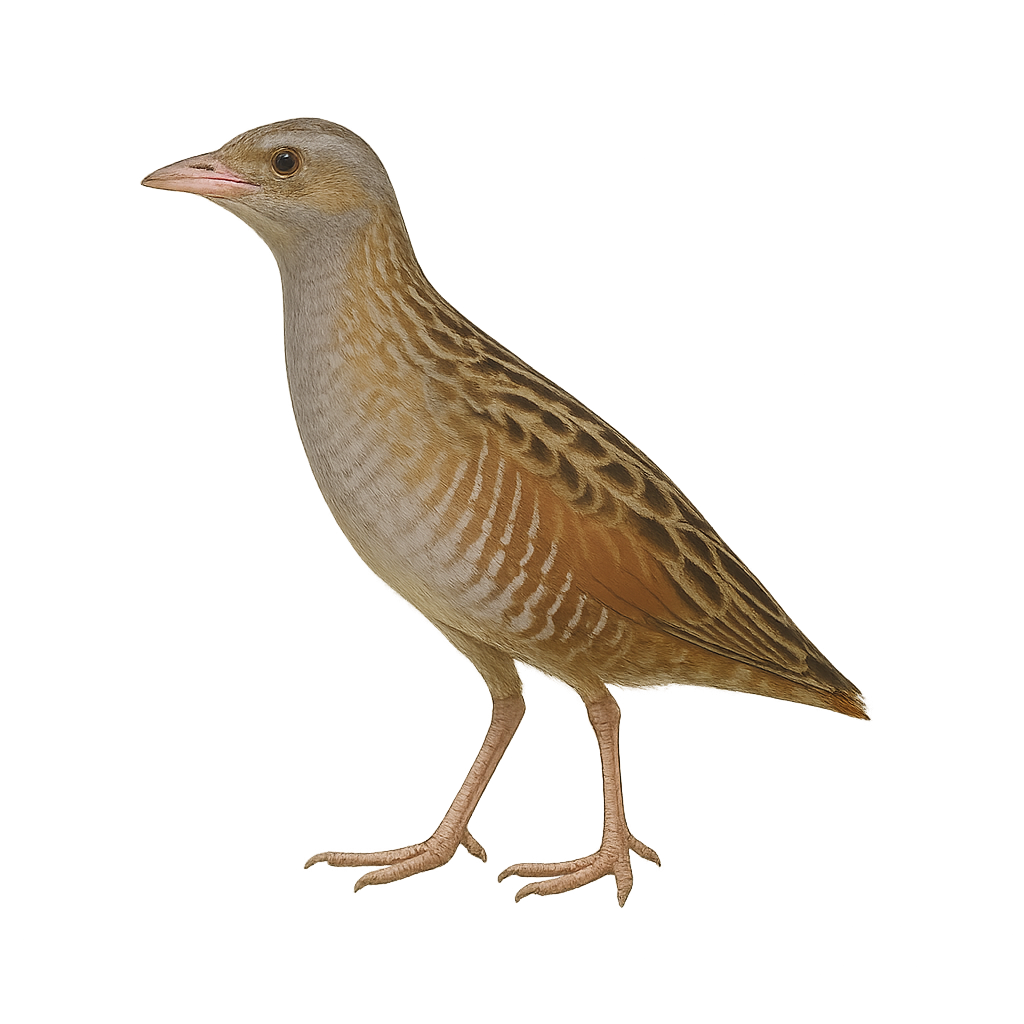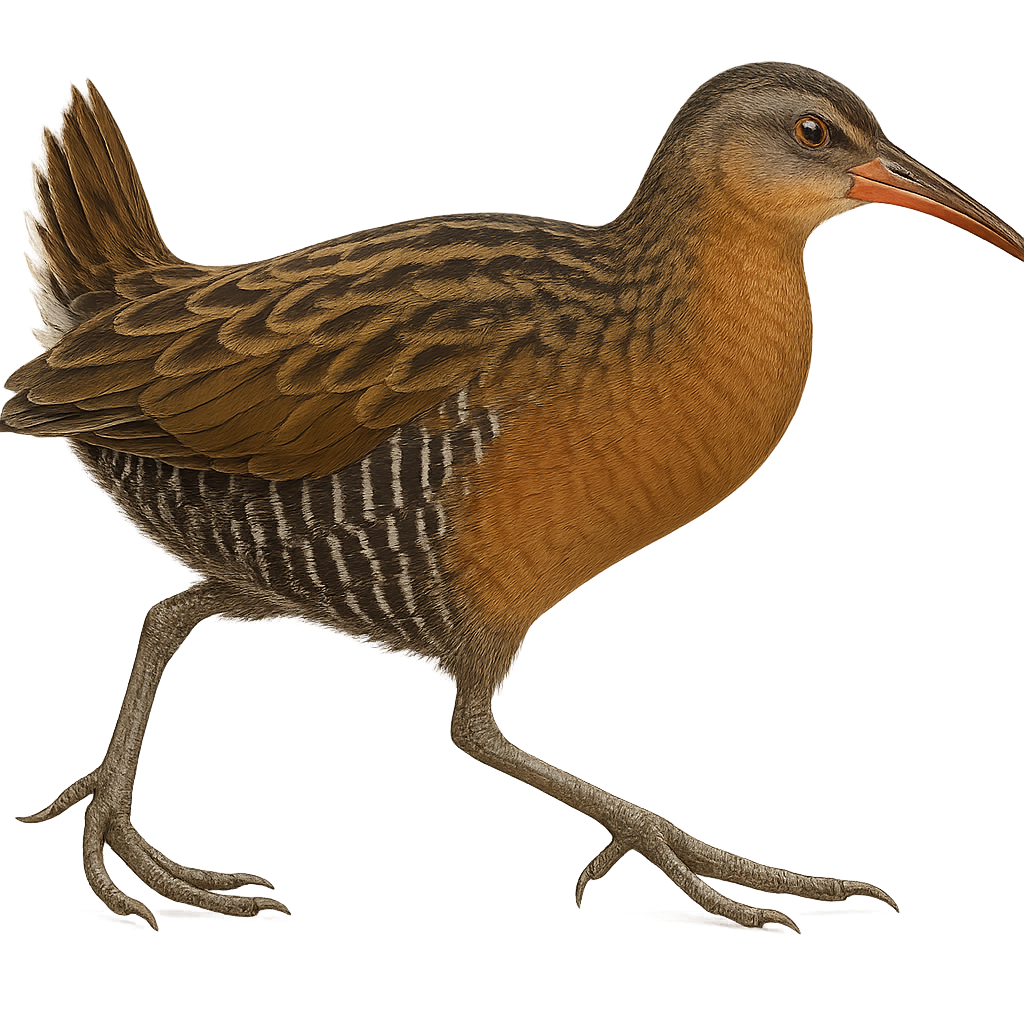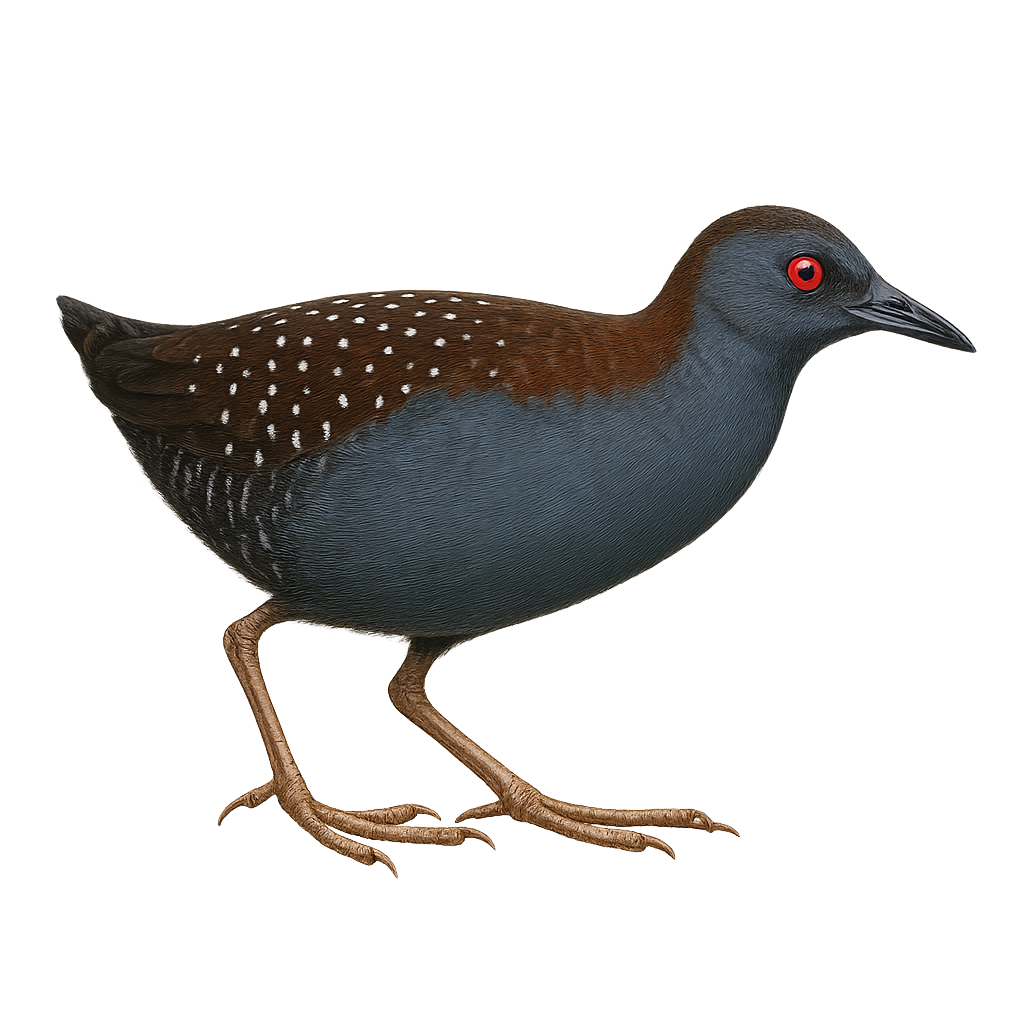The Brother's Batis is a small passerine bird belonging to the Platysteiridae family. It is mainly found in the forests and wooded savannas of East Africa, particularly in Tanzania and Kenya. This bird is characterized by its striking black and white plumage, with a distinctive black breast band. Males and females exhibit sexual dimorphism, with females having browner tones. The Brother's Batis is an active insectivore, often seen catching insects in flight or searching for them on branches. Its song plays a crucial role in territorial and courtship behaviors.
The Cape Batis is a small passerine bird native to southern Africa. It is noted for its colorful plumage, featuring a black head, white belly, and a bright orange breast band. Males and females exhibit sexual dimorphism, with females having slightly duller colors. This bird is often found in forests, thickets, and gardens, where it primarily feeds on insects. Known for its melodious songs and territorial behavior, the Cape Batis is a sedentary bird, although it may undertake minor altitudinal migrations depending on the season. Its population is stable, and it is not currently threatened.
The Chinspot Batis is a small passerine bird found mainly in sub-Saharan Africa. It is easily recognizable by its distinctive plumage, featuring a black band across the chest and a contrasting white chin. Males and females show subtle differences in coloration, with males generally having brighter colors. These birds are often seen in pairs or small groups, actively moving through bushes and trees in search of insects. They are known for their melodious and repetitive song, which plays a crucial role in territory defense and mate attraction.
The Edwards's Fig Parrot is a medium-sized parrot species endemic to New Guinea. It is characterized by its bright green plumage, with shades of blue and red around the head and neck. This parrot primarily inhabits tropical rainforests, where it feeds on fruits, seeds, and flowers. It is often seen in small groups or pairs, moving nimbly among the branches. Although its habitat is relatively stable, it is sometimes threatened by deforestation. Its song is melodious, consisting of whistles and chirps.
The Rose-crowned Fruit Dove is a colorful and fascinating bird native to the tropical forests of Australia and New Guinea. This medium-sized bird, measuring about 22 cm, is distinguished by its bright green plumage, vivid pink crown, and yellow belly. Males and females are similar, although males often have more vibrant colors. They primarily feed on fruits, playing a crucial role in seed dispersal. Their soft and melodious call resonates through the dense canopy. Although generally discreet, they can be observed in small groups, especially during the breeding season.
The Orange-bellied Fruit Dove, or Ptilinopus iozonus, is a colorful and fascinating bird primarily found in the rainforests of New Guinea and surrounding islands. This medium-sized pigeon, measuring about 24 cm in length, is easily recognizable by its vibrant plumage. Its bright orange belly contrasts with the vivid green of its wings and back, while its head displays shades of gray and violet. It primarily feeds on fruits, playing a crucial role in seed dispersal. Although often seen alone or in small groups, its discreet behavior sometimes makes it difficult to spot. Its ability to blend into dense foliage is impressive, making it a challenge for birdwatchers and photographers.
The Peale's Fruit Dove is a medium-sized bird, measuring about 20 cm in length. It features a vibrant plumage with a green head and neck, a bright yellow belly, and wings with shades of green and blue. Males and females are similar, although males may have slightly brighter colors. This bird is endemic to the South Pacific islands, particularly in Samoa and Tonga. It prefers dense tropical forests where it primarily feeds on fruits. Its call is soft and melodious, often heard at dawn and dusk. Although generally solitary, it can be seen in small groups during the breeding season.
The Wompoo Fruit Dove is a medium-sized bird with vibrant and varied plumage. Its body is primarily green, with a purple head and chest, and a yellow belly. This fruit-eating pigeon is mainly arboreal, feeding on fruits in the rainforests of Australia and New Guinea. It is often heard before seen, thanks to its distinctive, deep call. Though discreet, it plays a crucial role in seed dispersal, aiding in forest regeneration. Its presence is an indicator of the health of its natural habitat.
The Beautiful Fruit Dove, or Ptilinopus pulchellus, is a bird from the Columbidae family, known for its striking and colorful plumage. It displays a vibrant mix of green, yellow, and red hues, making it particularly attractive. This bird is primarily arboreal and feeds on fruits, playing a crucial role in seed dispersal in its natural habitat. It is endemic to the tropical forests of New Guinea, where it prefers dense and humid areas. Although its conservation status is currently "least concern," deforestation and habitat loss pose potential threats to its population.
The Dwarf Fruit Dove, or Ptilinopus nainus, is a small, colorful bird belonging to the Columbidae family. It is primarily found in the lowland tropical rainforests of New Guinea and some surrounding islands. This fruit dove is recognizable by its bright green plumage, often speckled with yellow and red hues, allowing it to blend effectively among the foliage. It primarily feeds on fruits, playing a crucial role in seed dispersal. Although discreet, the Dwarf Fruit Dove is a sociable bird, often seen in small groups. Its small size and shy behavior make it a challenge for birdwatchers to spot.
The Golden Dove, or Ptilinopus victor, is a bird endemic to the tropical forests of certain Pacific islands. It is recognizable by its striking plumage, with a golden hue on the nape contrasting with the rest of its body, usually metallic green. This medium-sized pigeon measures about 30 cm in length. It primarily feeds on fruits, seeds, and occasionally insects. Its natural habitat is threatened by deforestation and the introduction of invasive species. It is often seen in pairs or small groups, and its soft, melodious voice is a distinctive sign of its presence in the dense canopy.
The Black-naped Fruit Dove is a medium-sized bird, measuring about 24 cm in length. It is notable for its colorful plumage, with a black head contrasting against its bright green body. The wings show shades of yellow and blue, while the underside is paler. This bird is primarily frugivorous, feeding on various fruits and berries. It is often seen in small groups in humid tropical forests, where it plays a crucial role in seed dispersal. Although generally discreet, its soft and melodious call can be heard through the canopy. The Black-naped Fruit Dove is a resilient bird, capable of adapting to different habitats, but remains vulnerable to deforestation.
The Buller's Shearwater, or Ardenna bulleri, is an elegant and graceful seabird primarily observed in the Pacific Ocean. It is distinguished by its silvery-gray plumage on the back and white on the belly, with long, slender wings that allow it to glide effortlessly over the waves. This migratory bird travels great distances between its breeding grounds in New Zealand and its feeding areas in the North Pacific. It nests in colonies on isolated islands, digging burrows in the ground to lay its eggs. The Buller's Shearwater feeds mainly on fish and squid, which it captures by skillfully diving into the water. Although its conservation status is concerning due to threats to its nesting habitats, conservation efforts are underway to protect this fascinating bird.
The Manx Shearwater, Puffinus puffinus, is a medium-sized seabird, measuring about 30 to 38 cm in length with a wingspan of 76 to 89 cm. Its plumage is predominantly black above and white below, allowing it to blend into its marine environment. Known for its long migrations, this bird travels thousands of kilometers between its breeding sites in Europe and wintering grounds in South America. It nests in burrows on isolated islands, often in dense colonies. The Manx Shearwater feeds mainly on fish and squid, diving underwater to catch its prey. Although relatively common, it is vulnerable to introduced predators at its nesting sites.
The Balearic Shearwater, Puffinus mauretanicus, is a seabird endemic to the Balearic Islands. It is characterized by its dark brown plumage on top and lighter underneath, with long, narrow wings adapted for gliding over waves. Measuring about 30 to 40 cm in length with a wingspan of 75 to 90 cm, it is perfectly adapted to life at sea. This bird primarily feeds on fish and cephalopods, which it captures by diving underwater. Unfortunately, the Balearic Shearwater is critically endangered due to predation by introduced species, marine pollution, and overfishing, which reduces its food resources.
The Sooty Shearwater is a medium-sized seabird known for its dark brown plumage and long, slender wings. It is often seen gliding close to the ocean waves, skillfully using air currents to travel great distances. This tireless migrator covers thousands of kilometers between its breeding sites in the southern hemisphere and feeding areas in the northern hemisphere. It nests mainly on remote islands, digging burrows in the ground to lay a single egg. The Sooty Shearwater feeds primarily on fish and squid, diving underwater to catch its prey. Although its population is still large, it is threatened by industrial fishing and climate change.
The Great Shearwater, or Ardenna gravis, is a medium-sized seabird belonging to the Procellariidae family. It is mainly observed in the North Atlantic, where it migrates long distances between its breeding grounds in the southern hemisphere and feeding areas in the northern hemisphere. This bird is recognizable by its brown and white plumage, with a dark head and sturdy beak. It primarily feeds on fish and squid, which it captures by skillfully diving into the water. The Great Shearwater is an excellent glider, using air currents to travel great distances with minimal effort. Its population is considered stable, although it is sensitive to environmental changes and marine pollution.
The White-tailed Eagle is a large raptor primarily found in Eastern Europe, Northern Asia, and some regions of Central Asia. It measures about 70 to 90 cm in length, with a wingspan of 1.8 to 2.3 meters, and weighs between 3 and 6 kg. Its plumage is primarily brown with a distinctive white head and tail. The White-tailed Eagle is an excellent fisherman, primarily feeding on fish, but it also hunts birds, small mammals, and scavenges carrion. It primarily inhabits areas near bodies of water such as lakes, rivers, and estuaries. While its population has been growing in some areas due to conservation efforts, this species remains vulnerable to habitat loss, water pollution, and human disturbances.
The Bald Eagle is a large raptor primarily found in North America, near bodies of water such as lakes, rivers, and coastal areas. It measures about 70 to 90 cm in length, with a wingspan of 1.8 to 2.3 meters, and weighs between 3 and 6 kg. Its plumage is primarily dark brown with characteristic white head and tail. The Bald Eagle is an excellent hunter, primarily feeding on fish, small mammals, and birds, which it captures by diving or snatching its prey with powerful talons. Although its population once faced a significant decline and was threatened, particularly due to pollution and hunting, the Bald Eagle is now a protected species, and its population has greatly recovered.
The White-bellied Sea Eagle is a large diurnal raptor, easily identified by its white head, belly, and tail, contrasting with its dark grey wings and back. It measures between 70 and 85 cm in length with an impressive wingspan reaching up to 2.2 meters. This predator primarily feeds on fish but can also capture birds, reptiles, and small mammals. It is often seen near coasts, estuaries, and large lakes, using its powerful talons to snatch prey. The White-bellied Sea Eagle is territorial and forms monogamous pairs for life. Its distinctive call, a loud "ki-ki-ki," often echoes through its natural habitat.
The Steller's Sea Eagle is a large raptor primarily found along the coasts of Northeast Asia, particularly in Russia and Japan. It measures about 85 to 105 cm in length, with a wingspan of 2.2 to 2.5 meters, and weighs between 4 and 9 kg, making it one of the largest eagles in the world. Its plumage is primarily dark brown with a white head and pale yellow beak. The Steller's Sea Eagle is an excellent fisherman, primarily feeding on fish, but it also hunts seabirds and marine mammals. It prefers coastal areas and islands where it can find its food and is often seen flying over the seas or resting on rocks or trees. While its population remains relatively stable, this species is vulnerable to habitat loss due to human activity, climate change, and ocean pollution.
The Resplendent Quetzal is a colorful bird primarily found in the cloud forests of Guatemala and Mexico. It measures about 35 to 40 cm in length, with a wingspan of 50 to 60 cm, and weighs between 200 and 300 g. Its plumage is bright green with a vivid red throat and a long tail composed of elongated feathers. The male is particularly spectacular, with more colorful plumage and a distinctive crest. The Resplendent Quetzal is frugivorous, primarily feeding on fruits, berries, and small insects. It is also an important symbol in Mayan culture, representing freedom and the beauty of nature. Although its population is declining, primarily due to deforestation and poaching, this species remains protected in certain regions.
The Crested Quetzal, or Pharomachrus antisianus, is a striking bird found in the humid forests of the Andes. It is known for its vibrant plumage, with shades of emerald green and bright red, and the characteristic long tail of the males. This quetzal is a symbol of beauty and freedom in many South American cultures. It primarily feeds on fruits, but also consumes insects and small vertebrates. Its presence often indicates the health of its forest habitat. Although its conservation status is not alarming, deforestation poses a potential threat to its populations.
The Golden-headed Quetzal, or Pharomachrus auriceps, is a striking bird known for its vibrant plumage and presence in the humid tropical forests of Central and South America. This quetzal is distinguished by its golden head, metallic green wings, and long tail. It is often found in cloud forests, where it primarily feeds on fruits, but also insects and small vertebrates. Its melodious song and spectacular courtship displays make it a subject of interest for ornithologists and photographers. Although its habitat is threatened by deforestation, it remains relatively common in some protected areas.
The Pavonine Quetzal, or Pharomachrus pavoninus, is a stunning bird found in the tropical forests of South America. With its emerald green and vivid red plumage, it is admired for its beauty and grace. This bird measures about 36 to 40 cm in length, with a tail that can reach up to 60 cm in males. It primarily feeds on fruits, but also consumes insects and small vertebrates. The Pavonine Quetzal is often seen in humid forests, preferring altitudes between 500 and 2000 meters. Although its habitat is threatened by deforestation, it is currently listed as Least Concern by the IUCN.
The Resplendent Quetzal is a magnificent bird primarily found in the tropical and subtropical forests of the southwestern United States, Mexico, and Central America. It measures about 30 to 40 cm in length, with a wingspan of 50 to 60 cm, and weighs between 100 and 150 g. Its plumage is a vibrant green, with a vivid red throat and a long tail composed of elongated and brilliant feathers. The male is particularly spectacular, with even more colorful plumage and a distinctive crest. The Resplendent Quetzal is primarily frugivorous, feeding on fruits, berries, and small insects. This bird is also an important symbol in the indigenous cultures of the region, representing beauty and freedom. While its population remains relatively stable, this species is still vulnerable due to deforestation and habitat loss.
The Virginia Rail is a medium-sized waterbird, measuring about 20 to 27 cm in length. It is recognizable by its reddish-brown plumage on the back and wings, and its gray belly. Its long, slightly curved bill is perfect for probing mud in search of food. This bird prefers marshes and wetlands where it can hide among the reeds. It is often heard rather than seen due to its secretive behavior and dense habitat. The Virginia Rail primarily feeds on insects, small crustaceans, and seeds. It is known for its distinctive calls, often described as repeated "kik-kik-kik" sounds.
The corn crake is a rail in the family Rallidae, measuring 23–28 cm with cryptically streaked brown plumage and grey legs. It inhabits damp grasslands and tall vegetation, feeding mainly on insects, earthworms and molluscs taken from the ground. During breeding, the male emits a loud, repeated “crek-crek” call both night and day to attract females and defend territory.
The King Rail, Rallus elegans, is a medium-sized waterbird belonging to the Rallidae family. It is characterized by its reddish-brown plumage, black and white barred flanks, and slightly curved long bill. Mainly found in the freshwater marshes of North America, it is often difficult to spot due to its secretive behavior and dense habitat. This bird is an excellent swimmer and primarily feeds on aquatic insects, crustaceans, and small fish. Although its call is powerful and distinctive, it is rarely heard outside the breeding season. Habitat conservation is crucial for its survival, as it is vulnerable to wetland destruction.
The Black Rail is a small, elusive bird known for its secretive nature and rarity. It measures about 10 to 15 cm in length and weighs between 30 and 40 grams. Its plumage is primarily black with shades of gray and brown, and it has distinctive red eyes. This rail prefers freshwater marshes and wet grasslands, where it primarily feeds on insects, small crustaceans, and seeds. It is often heard rather than seen, emitting sharp, piercing calls. Its population is declining due to habitat loss and predation, making it a conservation concern.


